Panama Canal
Panama Canal is one of those places in the world that you have to pass if you want to circumnavigate and don’t feel like sailing in the cold. It ain’t cheap, to be honest it is idiotically expensive, but being the biggest business and national income for Panamanians, and yachts being just a filler in the schedule between big ships, it kinda makes sense. Our advisor was visibly surprised, if not shocked, when we told him that the Suez Canal is 10 times cheaper! We were also surprised when we discovered that the cost of Canal for Panamanians is about 100 dollars!
Panama Canal authorities are constantly changing the requirements, and we are not going to write them down here. If you want to cross the canal without an agent (which we highly recommend, because procedure is super easy), you can download all requirements and procedures from https://pancanal.com/en/maritime-services/customer-forms/. I will refer to it in this text as a manual.
Search for document number 4352 or title
Procedures for securing a Handline Transit of the Panama Canal
Below you will find our experience from our three crossings, and recommendations based on this experience.
Paperwork
Before you start
There is a lot of communication with the office, primarily through email or phone calls, and they prefer calls from Panamanian numbers. Best way is to get yourself a prepaid Panama GSM number, which costs approximately $5 per week with TIGO.
Start of the procedure
Personal touch can be very helpful. If you’re unsure whether you’ve correctly filled out all forms, or run into any problems with their new application they introduced in June 2023, don’t hesitate to ask for help. From what we know, the process became less complicated including measurement being scheduled only if Canal authorities question your size or required equipment onboard. In that case, they will ask you where your boat is. If you are already on one of their appointed anchorages, you will get only a rough date way in the future. If your time is tight, like it was for us, just ask what would be the quickest way.
We were measured in March, during World Arc Regatta (participants have the priority over regular people), so it was impossible to get measured on the anchorage, but they fit us in as soon as we decided to stay overnight in the marina. Our friend in December didn’t have to wait at all, while others in April waited a few days at anchor. Technically, the measurer is supposed to get to your boat only by service boat, but we saw them make exceptions.
Don’t get frustrated, keep calling the office. They are willing to help, just don’t try to pull a “I am a famous youtuber”, or “I pay, I demand” thing. Or, who knows, maybe do. They have a really good laugh about it in the office. We are sailing in the wake of famous idiots. It is good for some entertainment.
Measurement
The measurement of the boat is a one-time thing. So, if you decide to go through the Canal again, you won’t have to repeat it. Unique number you receive is assigned to your boat. Not sure about the boat inspection, because it is mentioned that it is valid for 60 days.
The boat is measured to the extremities, so if you have your dinghy hanging on the davits, bowsprit, anchors sticking out etc., it will be measured with it. So, our boat from registered 41ft. is listed as 47 footer! Price remains the same, unless the boat is longer than 65ft.
Read carefully the requirements and remember to be able to present fog horn! blow horns are not acceptable.
Declared speed
When declaring your boat’s speed, don’t claim a higher speed than you’re comfortable maintaining. It’s a 10-hour journey, so if your engine is older or tends to overheat, declare the minimum speed. Advisors might try to push you to go faster, but be persistent. Our friend pushed too hard, overheated the engine, and he had to stop overnight in Gatun overnight. It cost him 900 USD because he managed to restart the engine the next day. If your engine breaks you will be towed at your cost. The first three buoys on both sides are used by advisors to check if you can maintain declared speed, and they monitor it using their own apps.
Payment
Payment options
Back in March, you had just two payment options for the canal: cash or wire transfer. They did mention that paying by credit card might become possible soon, especially with the new canal app ASEM (check latest info in the manual).
Wire Transfers
Sending money by wire transfer takes longer, and some of the European banks do not allow transfers from or to Panama. Our friend’s transfer got stuck in the intermediate bank, and it took him 6 weeks to finalize the payment.
Cash Payment
If you decide to pay by cash, you will find the detailed info in the manual, including how to find the bank in Panama City and in Colon.
Cash withdrawal in Panama can be a bit of a headache. You can only withdraw 250 USD at a time, they charge an extra 5 USD for each operation. Taking over 3000 USD would require at least 12 operations, so make sure you do it in one of the malls. On the Atlantic side, don’t do it in Colon city center. It is not safe! It is probably a good idea to take a friend with you. If you are sailing from Colombia – take cash there. It is cheaper and way quicker!
Confirmation calls
Once you’ve paid up, call them to confirm. In general – it is a good rule of thumb to call after each step you complete. They won’t reach out if something stalls in the procedure. If you manage to pay before 12:00, you may call the Canal office the same day around 5pm. If not, the day after.
Schedule the crossing
All steps are in the manual, including phone numbers to reach out. Remember they are very friendly and willing to help, so if the system doesn’t allow you to book the date you are aiming for, the best move is to give them a call.
Our tip: Get all prepared for the crossing a few days ahead. Inform the Canal Office that you arrived at the anchorage, and you are ready to cross. You might get the confirmation sooner, or maybe even cross a day earlier.
The final date and type of crossing (early morning start, one-day or afternoon start, two-day crossing) will be confirmed on the last day before crossing. Once the date and time is confirmed, any delays on your side will be fined and deducted from the deposit. Canal is moving the dates quite frequently due to insufficient number of advisors. At the last stage it might be a day or two, but you have to be ready for the crossing regardless.
Preparation for crossing
Crew
If you don’t have enough people onboard, you have an option to hire them, or you can look for them in the marinas or on facebook. Here are most popular Facebook cruisers groups: Linton Bay adn Puerto Lindo Cruisers and Sailors, Linton Bay and San Blas Cruisers, SAN BLAS CRUISERS, Panama Cruisers, Panama Cruisers – Pacific Side. There is always somebody willing to see how it goes before their own crossing, so it is quite easy. We did it 3 times, twice on our friends’ boats. If you want to hire linehandlers contact Stanley +507 6523 3991, he has a good reputation and is punctual.
Gloves! Make sure that every line handler has gloves (paid crew is taking care of themselves)
Food
Get ready for some serious cooking because you’ve got to feed at least 6 people! Food needs to be pre-cooked, and ready to reheat; no big cooking on the way.
What to cook? Every advisor enjoyed chili con carne, spaghetti, …. chips and cookies do not count as a meal, nice snack though.
Our advisor explained why Canal authorities put meals in the regulations.
It is a 10-11 hour passage. It used to be pretty common for crews to eat breakfast before the advisor showed up and dinner after the crossing. That meant literally no food in between. The saddest meal our advisor ever saw was a single sandwich with a sad slice of tomato 😉
We had tons of pancakes and scrambled eggs in the morning, some finger food during the day, and chili con carne in the afternoon. And let me tell you, Ray, our advisor, was one happy puppy!
Drinks
You need a lot! Bottled water for the crew and advisor is a must. It is super hot with hardly any breeze there, so make sure you have enough. Crossing day is long. Water from a watermaker is not acceptable.
Lines
It is obligatory to provide 4 lines of diameter at least 22mm and length of 38.5m (127 ft.) each. Keep in mind that in locks there are a lot of line operations. Regular mooring lines you’ve got on board, can be a real hassle to handle. We’ve done crossing with regular mooring lines and with rented, lighter, floating lines. We advise you to rent floating lines. Length of the lines is calculated for the size of locks, so shorter lines are really not an option!
If you decide to rent lines and fenders, your preparation is down to arranging pick up at a certain time. We did it with Stanley, who brought it all to the Shelter Bay Marina. If you are not in the marina, they will charge you extra 20 USD for just picking the lines and fenders, and might charge you additional 12 USD for using a dinghy dock too. Stanley arranges the pickup on the Pacific side. It works similarly on the Pacific side. Everything via whatsapp, in English.
If you decide to use your own lines, make sure you have required length – it is really needed. It is a thick line, so the regular mooring line would be quite heavy. Rented ones are not that nice, but at least they’re lighter. It is a lot of work operating those lines in the locks, and works better on the lighter ones.
Fenders
Size of fenders is not specified, only described as sufficient. We borrowed fenders from our friends to have a total of 10, each about 3ft. long. If you have fancy fenders and want to keep them good looking, it would probably be a good idea to rent fenders too.
We crossed the Canal 3 times on different boats and never actually touched the walls in locks, but those concrete walls really look rough, not to mention, slimy and muddy, and being pushed against the wall by currents or inexperienced captains is not too rare, especially that the raft is operated by the middle boat only. Fenders between the boats in the raft work under normal working load of the fender, obviously the size matters and it should be suitable for your boat. We had the same fender setup as our friend on a 48ft. monohull.
Boat
- Deck: You need to be prepared for catching monkey fists thrown by lock workers. You attach a thin rope to the loop on your mooring lines and lock workers pull it back. Monkey fist is very hard and if it hits your solar it might break it. It is a good idea to wait for a monkey fist on the foredeck (away from any solars), lock workers would throw it wherever the crew is waiting for it. Prepare your deck for it. Remove any obstacles if possible.
- Solar panels: If you have side panels sticking out from the sides of your boat you need to take them down or tie them down, so it doesn’t obstruct line operations or rafting with other yachts.
We took our side panels down, but we didn’t cover our solar panels on the stern arch, though. - Cleats: make sure that handling the lines is easy and not obstructed by any items near cleats. Line operations are intensive in locks and it is essential that your line handlers can do their job without any problems. They need to be able to control the movement of the boat, when the lines are not tied, just blocked when lock is being filled or emptied. It goes pretty fast and movement can be a bit hectic.
- Wind generator: our wind generator is on the stern arch and we didn’t protect it.
- Sun awning: Bimini is enough, but the passage across the lake Gatun is long, so if you don’t have enough space in the cockpit, your crew will be suffering or hanging out inside the boat.
Check if you have:
- working toilet
- fog horn
- navigation lights
- working VHF dual watch
- working engine and enough fuel!
Crossing Day, Yay!
As I mentioned before, you might be scheduled for one-day or two-day crossing. Canal authorities try to squeeze all yachts into one-day crossing, as they don’t have enough advisors, and two-day crossing requires two of them! We asked the scheduler for a two-day run, to sleep on the Lake Gatun, but we failed. Apparently, swimming at night in the Lake Gatun is a sailing tradition. I chatted about it with Ray, our advisor, on the way. He said it is LOCO because crocodiles there can grow up to 8 meters and no sane Panamanian would do that! Lake Gatun is a popular weekend spot for Panamanians, so I think we all should at least consider his advice.
If you are scheduled for 3:30 a.m. it means that at 3:30 your engine is warmed up and running, and you are ready to lift the anchor immediately as soon as the advisor gets onboard. They are very punctual, so be ready. On both sides it is about 5 Nm to the first lock. The advisor checks your speed and RPMs. In the first set of locks you enter behind the ship, so delays are not welcomed. In the second set of locks you wait for the ship.
Our advisor was very firm about the minimum speed of 5 knots and he checked it constantly all day long on his phone. Luckily our dear old engine got the message and reached an unbelievable speed of 6.2 knots by the end of the day. It made our advisor super happy, as his workday ended earlier than he calculated. I bet they get frustrated when they see a boat with max. speed of 5kn on their schedule.
Before the first lock we rafted up with two other boats, of more or less the same size. We started with 2 catamarans, and finished with one of them plus some other monohull. Lines for the raft are operated from the boats on the sides. Middle one is the main propulsion for the raft. Advisors make sure that all the lines in the raft are tied adequately. Smaller boats (less than 30ft.), when rafted with significantly bigger yachts, handle only stern lines for the raft.
In the locks
Walls in the locks are very rough, and you wouldn’t want to be pushed against them. During our 3 crossings advisors were very vigilant and we were never even close to touching. People get a bit wild in the last lock (first one on the Pacific side) as legend says that there are tremendous eddies or massive currents when the gate opens. I bet there could be weather conditions supporting those legends, but none of it happened to us. We had a crazo driver on the catamaran in the middle, who pushed the entire raft to the speed of over 6 knots! 😅 We survived 😀
Lock workers throw two monkey fists very precisely. All you need to do is to attach your front and aft lines to it. As I mentioned before it is good to catch them both on the foredeck. Workers prepare lines before the locks and walk along with you inside the lock. Once the line is secured on the poller, you need to control the tension. If you don’t do it fast, the entire raft might drift to the other side. Happiness of the boat on the other side of the raft is in your hands! But so is yours – in their hands!
It’s a lot of work and we switched frequently having a mixed crew. Line handling is exhausting.
Lake Gatun
It’s vast, it’s gorgeous so enjoy the views. Depending on the advisor, we had to strictly follow canal buoys (Ray was very precise with navigation) or it was more or less like a guideline and the advisor fell asleep. Traffic is pretty heavy there so you cannot do any major shortcuts, small ones – only when the advisor approves.
Canals
stick to the navigation buoys and land signs. It is crucial not to go outside the track. Not like a port entry. Week before our crossing, one of the yachts hit some obstacle at full speed. It is wise to talk to your advisor if the water level is high or low. This year it was extremely low so buoys are on the loose ground cable and may drift to the shallow water! Keep a distance!
That’s it. We had a lot of fun. I hope you will too!
www.noforeignland.com


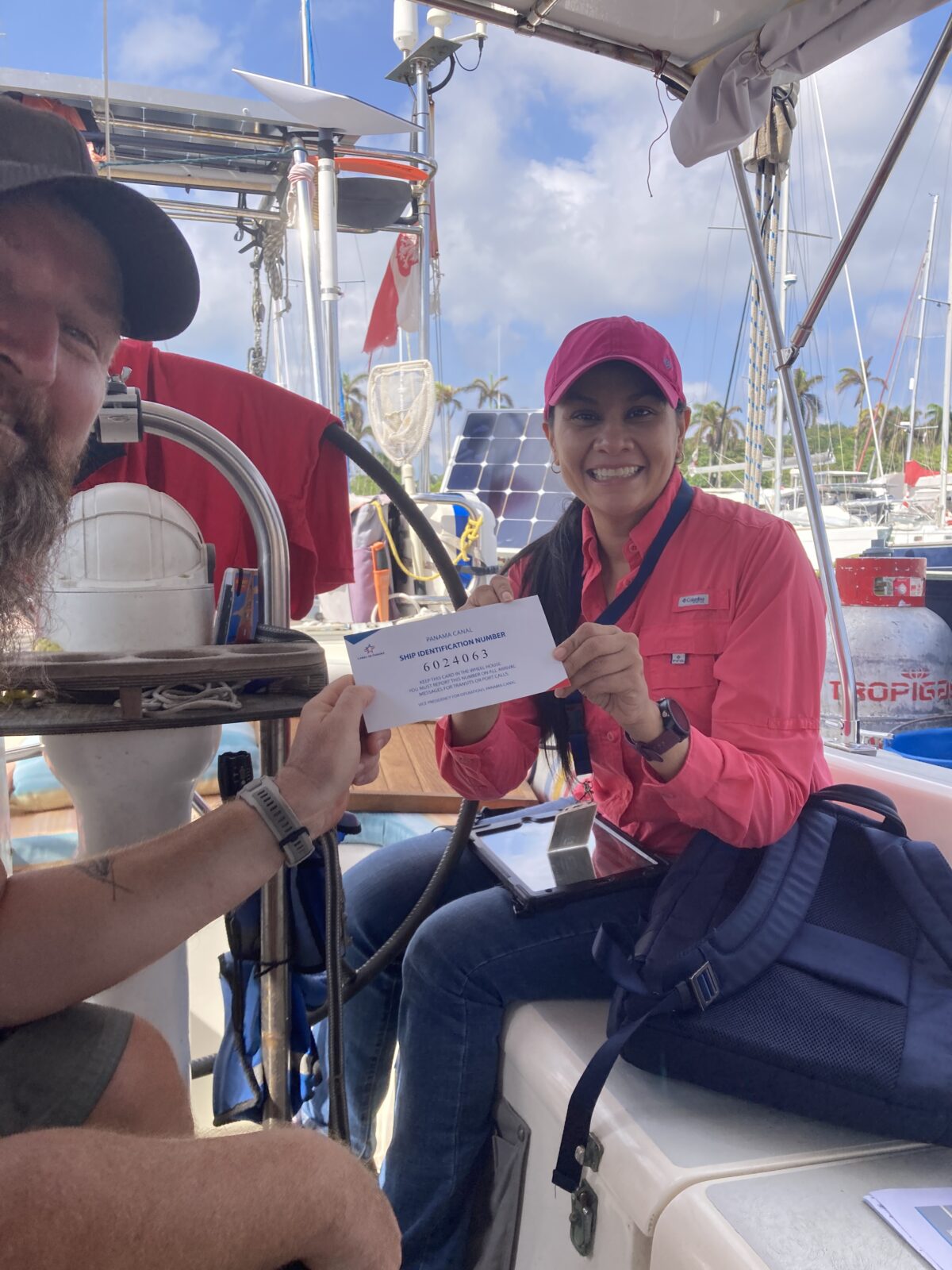


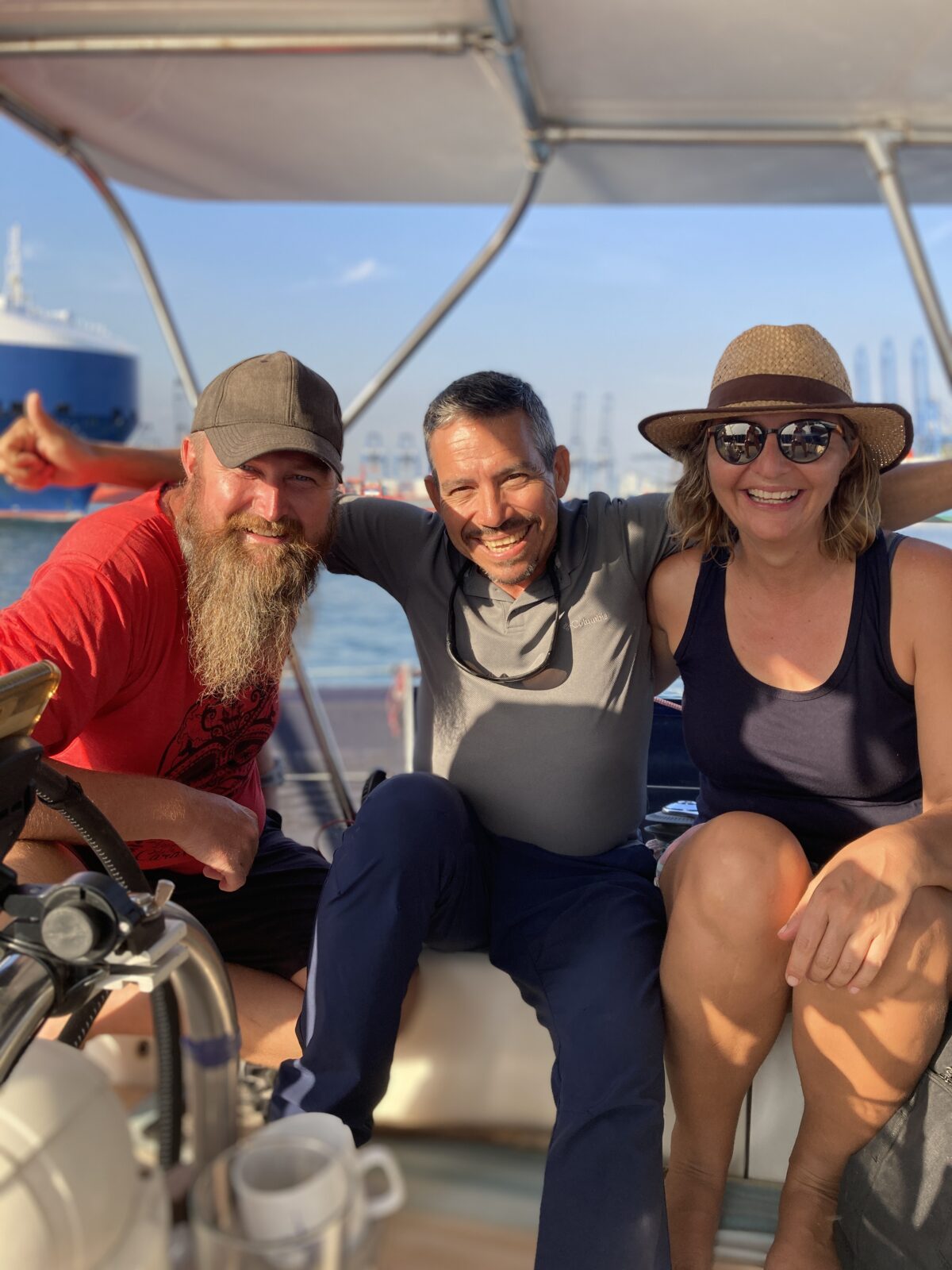
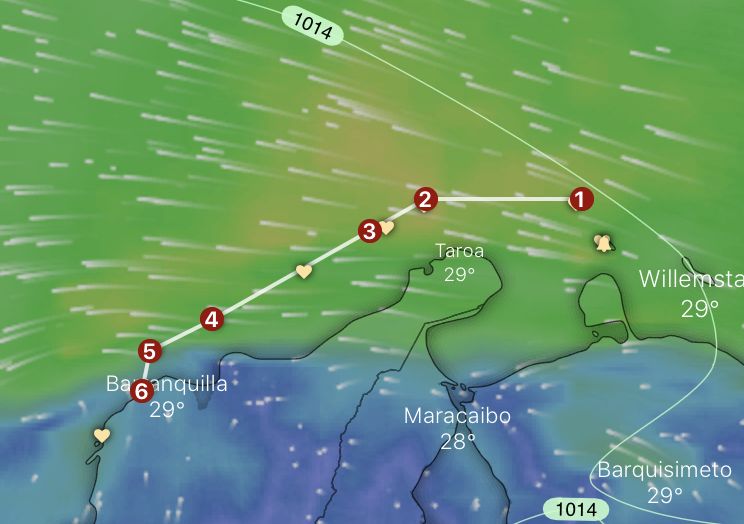

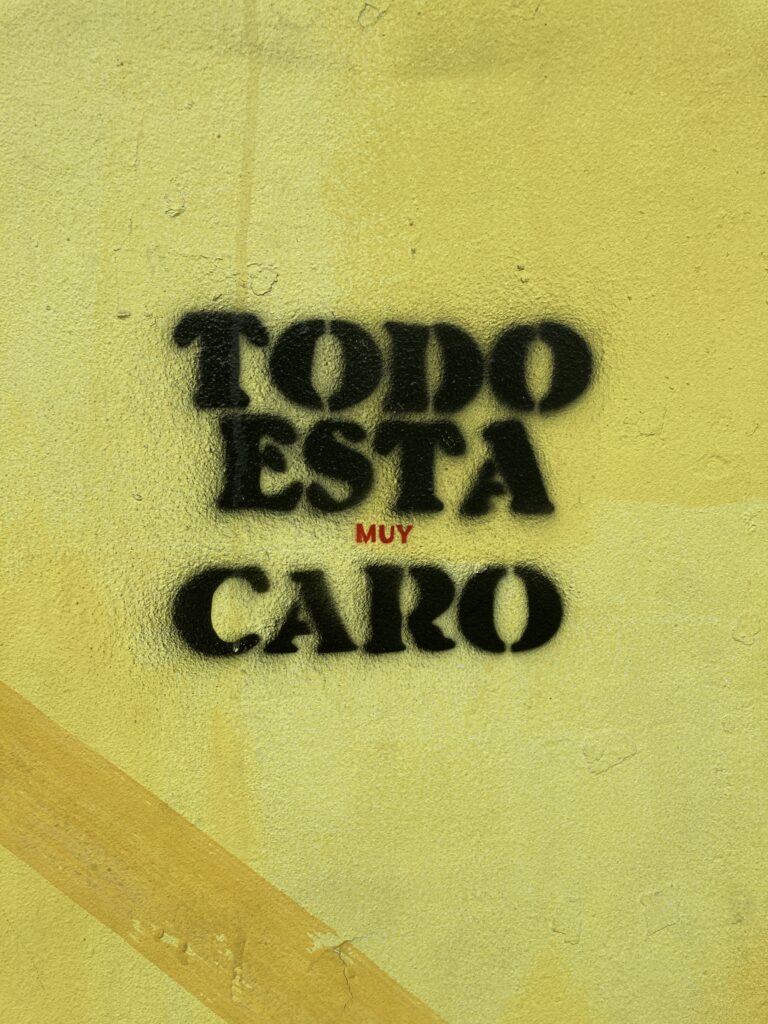

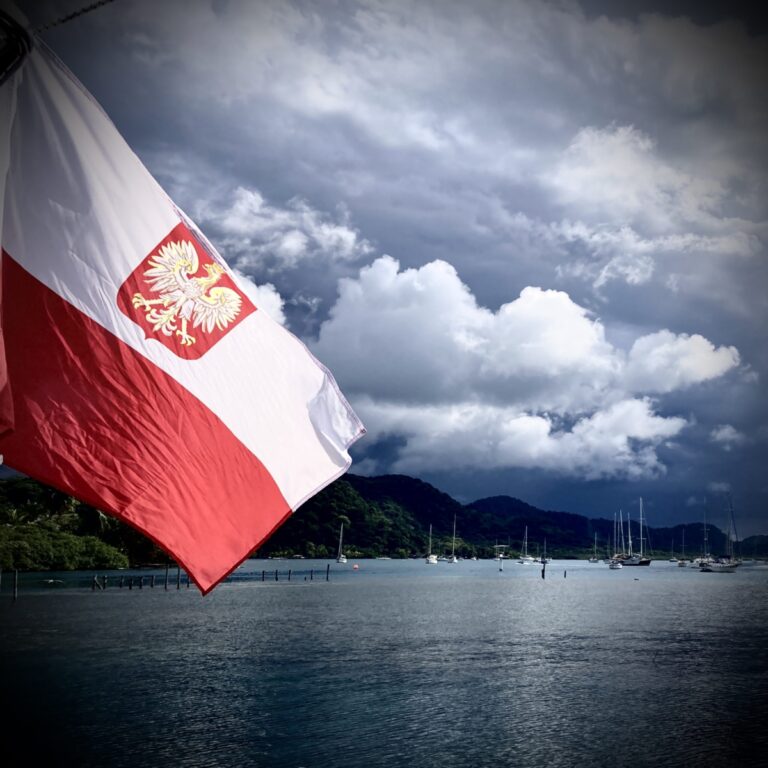

Great info. Thanks for taking a time to write and share it. Very tempting also. It looks like the only thing need itfor Lala to cross the canal is the fog horn. Have fun in Puerto V
You are most welcome!